
|
You entered: New Zealand
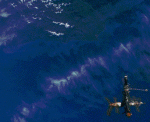 Mir Over New Zealand
Mir Over New Zealand
26.10.1996
The Russian space station Mir was photographed last month high above New Zealand. Before returning with record-breaking astronaut Shannon Lucid, the space shuttle Atlantis crew took this breathtaking view from the Space Shuttle Atlantis. Atlantis had just undocked from Mir and was preparing to return to Earth.
 Three Galaxies over New Zealand
Three Galaxies over New Zealand
11.06.2014
No, radio dishes cannot broadcast galaxies. Although they can detect them, the above image features a photogenic superposition during a dark night in New Zealand about two weeks ago. As pictured above, the central part of our Milky Way Galaxy is seen rising to the east on the image left and arching high overhead.
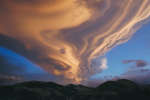 A Lenticular Cloud Over New Zealand
A Lenticular Cloud Over New Zealand
21.01.2009
What's happening above those mountains? Several clouds are stacked up into one striking lenticular cloud. Normally, air moves much more horizontally than it does vertically. Sometimes, however, such as when wind comes off of a mountain or a hill, relatively strong vertical oscillations take place as the air stabilizes.
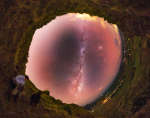 A Sky Portal in New Zealand
A Sky Portal in New Zealand
29.07.2014
To some, it may look like a portal into the distant universe. To others, it may appear as the eye of a giant. Given poetic license, both are correct. Pictured above is a standard fisheye view of the sky -- but with an unusual projection.
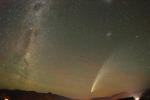 Comet McNaught Over New Zealand
Comet McNaught Over New Zealand
12.02.2007
Comet McNaught is perhaps the most photogenic comet of our time. After making quite a show in the northern hemisphere in mid January, the comet moved south and developed a long and unusual dust tail that dazzled southern hemisphere observers starting in late January.
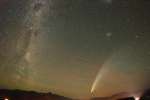 Comet McNaught Over New Zealand
Comet McNaught Over New Zealand
19.10.2014
Comet McNaught was perhaps the most photogenic comet of modern times -- from Earth. After making quite a show in the northern hemisphere in early January of 2007, the comet moved south and developed a long and unusual dust tail that dazzled southern hemisphere observers.
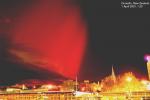 Aurora Over New Zealand
Aurora Over New Zealand
6.04.2001
Last weekend skygazers at middle and high latitudes around the globe were treated to expansive auroral displays as a magnetic storm raged around planet Earth. The storm was triggered by a solar coronal mass ejection associated with the giant sunspot group cataloged as active region number 9393.
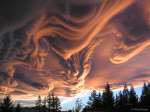 Asperitas Clouds Over New Zealand
Asperitas Clouds Over New Zealand
19.08.2018
What kind of clouds are these? Although their cause is presently unknown, such unusual atmospheric structures, as menacing as they might seem, do not appear to be harbingers of meteorological doom. Formally recognized as a distinct cloud type only last year, Asperitas clouds can be stunning in appearance, unusual in occurrence, and are relatively unstudied.
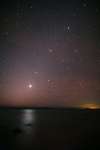 Ecliptic New Zealand
Ecliptic New Zealand
10.07.2010
Four bright celestial beacons and a faint triangle of light follow the plane of the ecliptic as it arcs high through this southern hemisphere night skyscape. Seen on a July winter night from Lake...
 Asperatus Clouds Over New Zealand
Asperatus Clouds Over New Zealand
17.04.2016
What kind of clouds are these? Although their cause is presently unknown, such unusual atmospheric structures, as menacing as they might seem, do not appear to be harbingers of meteorological doom. Known informally...
|
January |
|||||||||||||||||||||||||||||||||||||||||||||||||